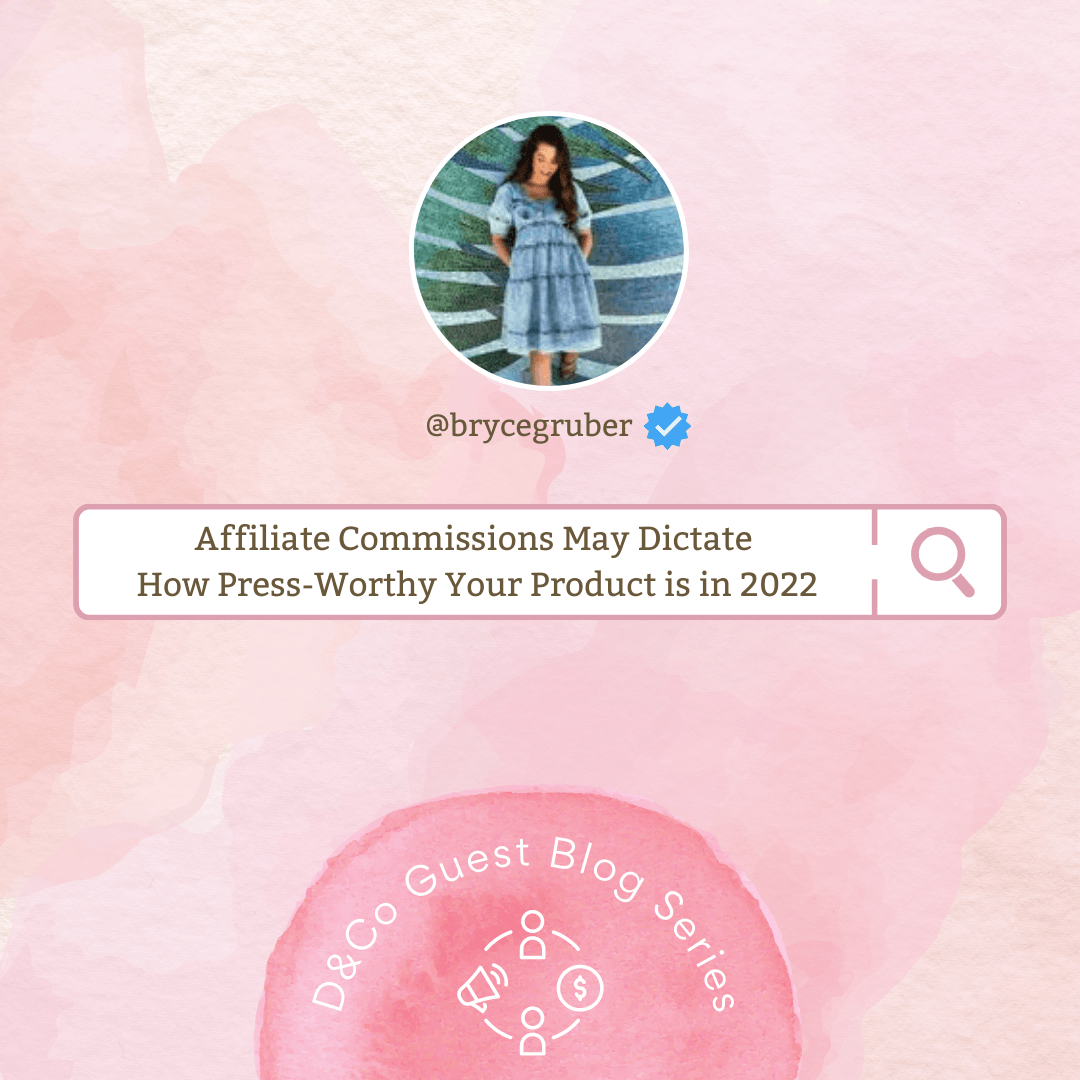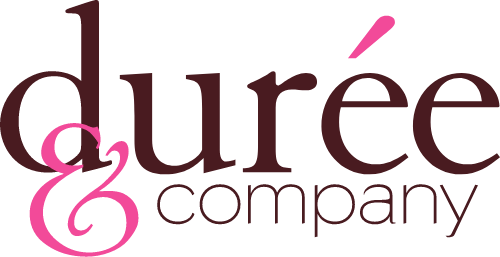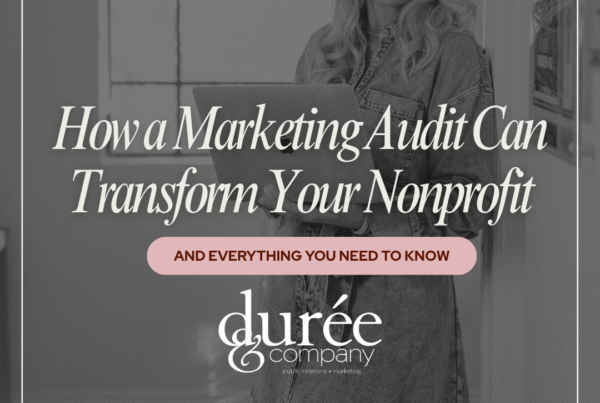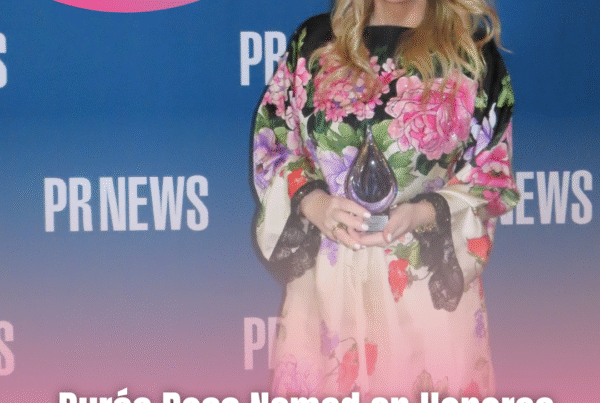
If you asked me five years ago, I’d have told you that Skimlinks and Viglinks, two of the largest affiliate scraping tools publishers use to generate revenue, were the best cash-boosting secrets in the industry. Everyone knows that ad dollars have been moving away from print and traditional media for what feels like ages already, but the idea of a relatively risk-free form of advertising for brands and revenue stream that applauds existing editorial content? Borderline miraculous.
Nowadays, the cat is entirely out of the bag and just about every publisher of every size is using affiliate links to keep their lights on. And while you may wonder if this is messy for editorial integrity, I assure you that it’s *mostly* not (anything in the wrong hands can be problematic, but let’s assume the best) and it’s one of the best ways to help brands grow their PR efforts without much effort at all. It’s something I talk about extensively in my Substack newsletter and an important pivot in the publishing industry that deserves all the high-fives.
Here are 7 things you NEED to know about getting your brand more love from the world of affiliate marketing:
- The entire industry is moving in this direction. If you’re pitching brands the old-fashioned way with here’s a celeb liking this widget or hey, we’re just cool for the following reasons — it’s tired and old. Publishers are constantly laying editors and support staff off, and we’re all being given combined roles with added responsibilities. Affiliate revenue coming from product-driven stories is filling in a lot of those gaps. Frankly. It’s a miracle for everyone. More on that in a minute, but I’ll tell you that every major North American publisher is already transitioning to this type of content for non-news topics. If you see a list of “The 10 Best ____” or “Best Valentine’s Day Gifts” you’d better believe the magazine is taking a cut of every sale. Everyone from NBCU, Turner, Hearst, Conde, Bauer, Meredith, etc have all been on board for years at this point. My own publisher has whole divisions devoted entirely to commerce.
- Affiliate content is an absolute miracle for brands of all sizes. Sounds daunting and complicated? Hardly. Getting set up on an affiliate program can cost as little as a few hundred dollars for the initial implementation to several thousand per month for massive enterprise systems that give absurd levels of data to companies willing to sift through it. Now, I’m in Camp Cheap with these programs because whether you pay $500 for set up or $5,000, the basic functions are pretty similar. The point is this: you can skip expensive advertising and just pay for performance. With affiliate programs, you’re paying a commission on generated sales.
- How does it work though? Glad you asked. Let’s say a makeup company is offering a 10% commission to magazines and other content creators who write up their new lipstick. A popular women’s magazine actually loves the unique shade and extra-special formula, so they add it to a roundup of the best gifts for women. As a result, 100 lipsticks are sold at $20 each. The makeup brand just sold 100 lipsticks, and the magazine netted $200 (or 10% of the $2,000 in gross sales). It’s a hell of a lot cheaper than taking out a print ad, and with little to no risk other than the time it takes to get the word out about the new product and generous commission. Obviously, this makes a PR team’s efforts that much easier as well.
- In a crowded product playing field, commissions can set your brand apart. Some product genres are just crowded. If you look at cotton bedding, for example, there are SO many similar brands with nearly identical specs. Frankly, a lot of them are offering sheets and pillows made in the same manufacturing facilities with little more than different logos and labels. When a commerce, shopping, or lifestyle editor is faced with the tough challenge of picking only one (or a small number) of products for a roundup and they’re all brimming with great shopper reviews and reasonable prices, we’ll often break the tie by determining who has the best shopping experience AND the best commission structure. I want to make it clear that product-focused editors are different than news editors, but there is some overlap at times—especially at smaller publishers.
- Readers actually LOVE this content. Believe it or not, some of these commerce-driven articles get the most clicks. Why? Well, think of your own behavior when you’re about to plunk down some cash on something you really want. You’ve probably googled and studied the stats on your favorite running shoes, that new air fryer on your kitchen counter, and especially big-ticket items like mattresses for back pain. Some of these articles are in review format while others are pure listicles and gift guides focused on things like the best Valentine’s Day gifts. The point is this: people are looking for product content either way, and we’re doing our best on the editorial side to deliver the best items and information possible.
- It’s not a guarantee of 100% positive press. I strongly prefer to focus on the good. When I write, if my review or thoughts on a product aren’t at least 90 percent positive, I just won’t write the piece. I’d rather not give any love to a product I don’t think is genuinely useful and of good value. That’s not to say I won’t point out a handful of honest flaws or issues (ie I wish it came in more colors or the size range is limited), but this genuine feedback also reminds readers that they can trust the content we deliver. Use it for your product development research or accept it for what it is—but know that in the end if a writer is offering a mostly glowing review, it’s good for your brand.
- Affiliate content is often syndicated. That means you may get more than one press hit on the same story. Here’s an example. Let’s say I write “50 Best Holiday Gifts for Men” for one of the outlets I contribute to. When they see the article is starting to take off and get lots of reader clicks (and it will, because that’s a commerce editor’s job), they’ll offer it to additional outlets like MSN, Insider, and AOL. They’ll then run the same article with my byline, and offer the original magazine a revenue share on the collected commissions. In the end, you’ve secured several placements and a far wider reach. Neat, eh?
I have about a million more things to say about the world of affiliate publishing, and that’s not hyperbole— but I’ll keep it brief so you can run to your affiliate dashboards to fiddle with commissions.
The best part of making the small and monetary and time investment in affiliate systems? It shatters the often-difficult barriers to entry for small and emerging brands. You no longer need massive six-and-seven-figure advertising budgets to get noticed by publishers.
Ready to engage your audience, turn readers into consumers, and increase your bottom line? Learn more about how to incorporate affiliate marketing into your public relations strategy here or contact the Durée & Company team to get started!
This post is part of Durée & Company’s ongoing Guest Blog series, The #DynamoDigest, where we have tapped select journalists and influencers whose work we admire and respect. In this series, top tips and best practices are shared across a variety of topics impacting the public relations industry today.
By: Bryce Gruber, Affiliate Home Editor at TMBI, including Reader’s Digest, Taste of Home, Family Handyman, Birds & Blooms and more.
About Durée & Company, Inc.
Durée & Company, Inc. is an award-winning, full-service public relations, marketing and special events firm founded in 1999. The firm has offices in Fort Lauderdale, Florida, and Aspen, Colorado. Durée & Company serves the corporate, agency and nonprofit arenas for local, national and international clients. Services include public relations, social media, marketing, digital marketing, content development, advertising, special events, branding, radio promotions, affiliate marketing and more. Durée & Company clients include well-known names in yachting, business, real estate, hospitality, travel, health and wellness, cannabis and psychedelics, art and culture, fashion, nonprofit organizations, cryptocurrency and technology, legal and professional services. Durée & Company is a member of PR Boutiques International™ (PRBI), an international network of boutique PR firms. To learn more, call 954-723-9350; go to dureeandcompany.com; cannabismarketingpr.com; or psychedelicpr.com. Join the social conversation and follow Durée & Company on Facebook, Instagram, Twitter, YouTube and LinkedIn at @DureeCoPR.








